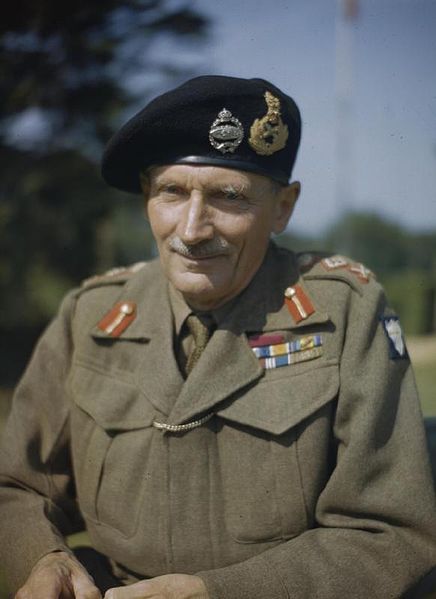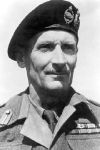I Was There! - It's a Watery War on Our Part of the Front
The War Illustrated, Volume 8, No. 202, Page 697-698, March 16, 1945.
The first seven days spent in Germany by General Crerar's British and Canadians, following the grand assault south-east of Nijmegen on Feb. 8, 1945, are summed up here by The Daily Express war reporter Paul Holt. His story from the Western Front is dated Feb. 16.
We have turned the original Siegfried Line and its supporting Kriemhold Line from the north and now, seven days after the attack, the British and Canadian forces have a sure foot in Hitler's dying Third Reich. There is devastation here worse than any I saw in Normandy, Belgium or Holland, save maybe for the town of St. Lo. This is the death we are bringing to the Germans. The longer they resist us the wider still the devastation must spread.
Back in Holland a week ago I saw the graves of German soldiers. They were neat. They had the cross at the head, the helmet on the breast, and round the graves white tape, fluttering a warning lest tanks coming on should disturb the soldiers whose battle is done. But here in Germany the German dead lie in the rain, for nobody has had time to bury them. There is more work to be done by the living.
Now we have that dreary Reichswald Forest behind us. In it, behind the fighting, the Gordons, the East Lancs, the Welshmen, the Somerset men, the Seaforths sit round pine fires and brew up their tea, waiting for the next battle to begin. The shattered trees cry and crack over their heads and the mud of the tracks on which their lives depend bubbles greasily.
The first tank into Cleves, first city of the Reich to fall to British arms, veered its great gun warningly from window to window. The turret top was down. But round the muzzle of the gun was spiked a four-by-four picture of Hitler, and perched on the “fender” of the tank there rode a happy little man with a blazing petrol tin, brewing up the tea.
So wet is this battle that the troops now call their commander Admiral Crerar. The men mostly sing the Bing Crosby ditty, “Or would you rather be a fish?” The wounded come back from the battle front riding high in ducks across the floods. The general directing the battle wears fisherman's waders, a paratrooper's camouflage smock and fisherman's jersey.
At any hour you likely to meet Field-Marshal Montgomery among the floods. Then this happens: A patient column has been waiting on the road for many hours. The flood laps slowly at the wheels of the lorries, rising higher. The troops jump from fender to fender, singing out, “Aye, aye, sir!” and less printable nautical remarks.
Suddenly, along the sodden road marked “Cleared of mines only to verges”, there comes a busy little jeep with a great red light flashing on and off by the radiator. Two grim-looking M.P.s with red caps ride the bumps with stiff backs. Behind them comes the biggest car I ever saw, shining black and shining silver with an outsize Union Jack fluttering at the bonnet. And inside alone sits Monty, who never misses a salute.
In the upland, where our gliders landed at Arnhem time, there are search-parties out, for although the Germans have been here now for four months, they did not busy our dead. In the rich and gloomy suburban houses of Cleves there is no sign of war shortage. The linen is good and ample. The black-out material is neat and good. The kitchenware is perfect.
Talk of the week here has been the fight of the Seaforths against the paratroops to the south around Gennep. The Jocks had their pipers playing at full blast in the forest to pin the attention of the enemy while they sent a company round to take them in the rear. The Jocks went in with bayonets and took heavy losses, but won the day.
It has been fighting like the American Civil War in the forest, with both sides coming out into clearings, seeing the enemy, and charging resolutely. The infantry have been predominant. The Nazis are fighting well, almost as well as we do. They have boys of 18 in their paratroop units against our boys of 18 who have taken the place in the “cutting edge” of the British infantry of the men lost since D-Day.
The German boys are fighting well because they do not know any other way to live. They lack any picture in their minds of a world at peace, and do not want the quiet way. It is an asset to be added to the tally of this offensive that we have brought elements of seven Germany divisions to the battle to be beaten west of the Rhine.
Previous and next article from I Was There!
I Was There! - Singapore's Giant Floating Dock Was Our Target
In the great bombing raid on Singapore on Feb. 1, 1945, the 50,000-tons dry dock was sunk – for the second time. Built in Britain and towed in sections 8,000 miles to Singapore, it was sunk by us wh
I Was There! - I Went With the Green Berets to Osnabruck
Senior Brigade Chaplain and R.C. Chaplain to the 1st Commando Brigade, the Rev. Terence Quinlan, R.N. (known throughout the Brigade as “The Bish”), tells how he stopped a sniper's bullet – and m
Index
Previous article
U-Boats With Funnels Are Prowling the Seas
The menace of German submarines, abated for a while, has broken out again. Now the threat is greater than ever, and our shipping losses have risen. R.A.F. Coastal Command has had a large hand in forci
Next article
"The War Illustrated" Sends its Own Representative to the Front
In response to an official invitation received by the Editor of “The War Illustrated” some time ago to make a personal visit to the British Armies now advancing into the very heart of Germany, we





